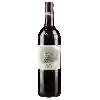
Winery La GuyennoiseCastle Grande Réserve Bordeaux
This wine generally goes well with poultry, beef or veal.
Food and wine pairings with Castle Grande Réserve Bordeaux
Pairings that work perfectly with Castle Grande Réserve Bordeaux
Original food and wine pairings with Castle Grande Réserve Bordeaux
The Castle Grande Réserve Bordeaux of Winery La Guyennoise matches generally quite well with dishes of beef, veal or game (deer, venison) such as recipes of cicadas at the chib, veal escalope with lemon sauce or roast duck in the oven.
Details and technical informations about Winery La Guyennoise's Castle Grande Réserve Bordeaux.
Discover the grape variety: Merlot
Merlot noir is a grape variety that originated in France (Bordeaux). It produces a variety of grape specially used for wine making. It is rare to find this grape to eat on our tables. This variety of grape is characterized by small to medium sized bunches, and medium sized grapes. Merlot noir can be found in many vineyards: South West, Languedoc & Roussillon, Cognac, Bordeaux, Loire Valley, Armagnac, Burgundy, Jura, Champagne, Rhone Valley, Beaujolais, Provence & Corsica, Savoie & Bugey.
Informations about the Winery La Guyennoise
The Winery La Guyennoise is one of wineries to follow in Bordeaux.. It offers 675 wines for sale in the of Bordeaux to come and discover on site or to buy online.
The wine region of Bordeaux
Bordeaux, in southwestern France, is one of the most famous, prestigious and prolific wine regions in the world. The majority of Bordeaux wines (nearly 90% of the production Volume) are the Dry, medium and Full-bodied red Bordeaux blends for which it is famous. The finest (and most expensive) are the wines of the great châteaux of Haut-Médoc and the right bank appellations of Saint-Émilion and Pomerol. The former focuses (at the highest level) on Cabernet Sauvignon, the latter on Merlot.
The word of the wine: Food and wine pairing
It is the set of techniques that allow for the pleasant combination of food and wine. Food and wine pairing is based on a few basic principles, such as similarity, complementarity or contrast, and involves all the elements that make up the wine and the food (flavours, textures, aromas, etc.).














